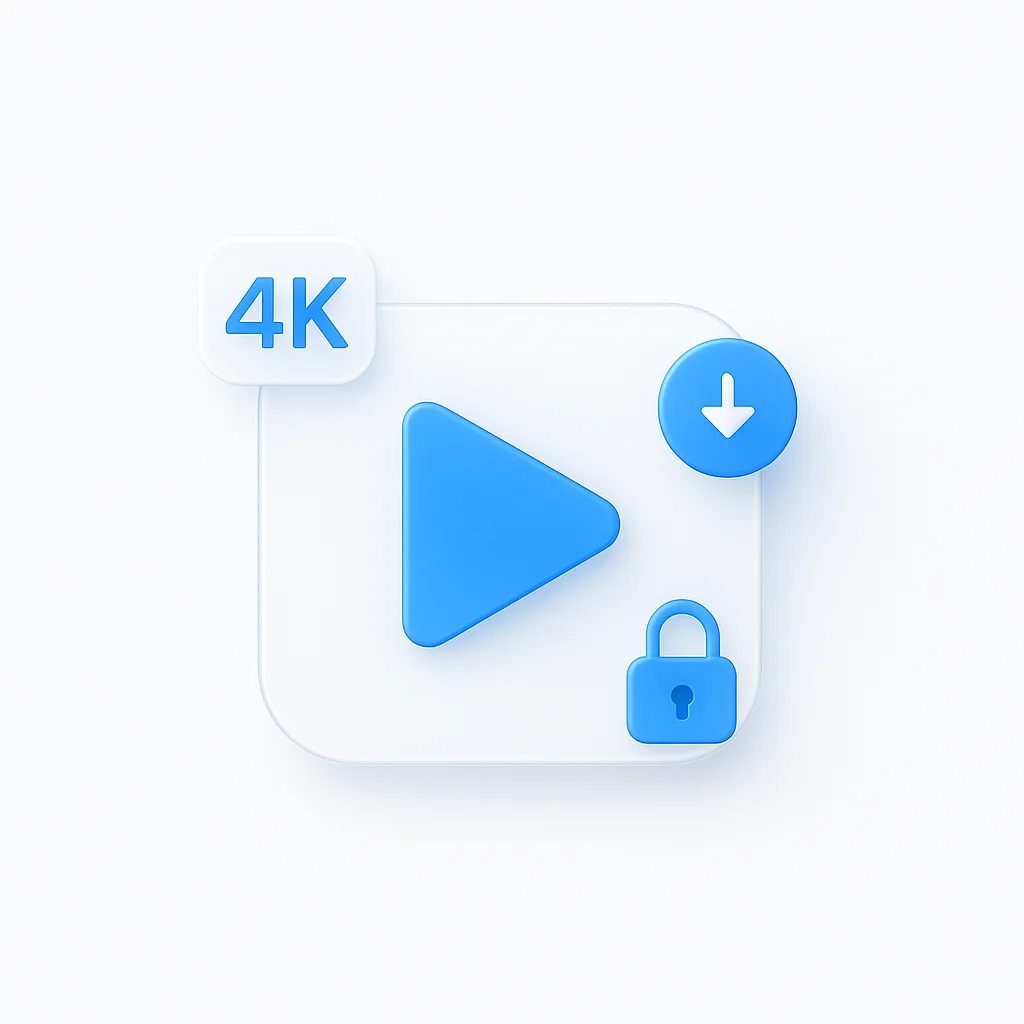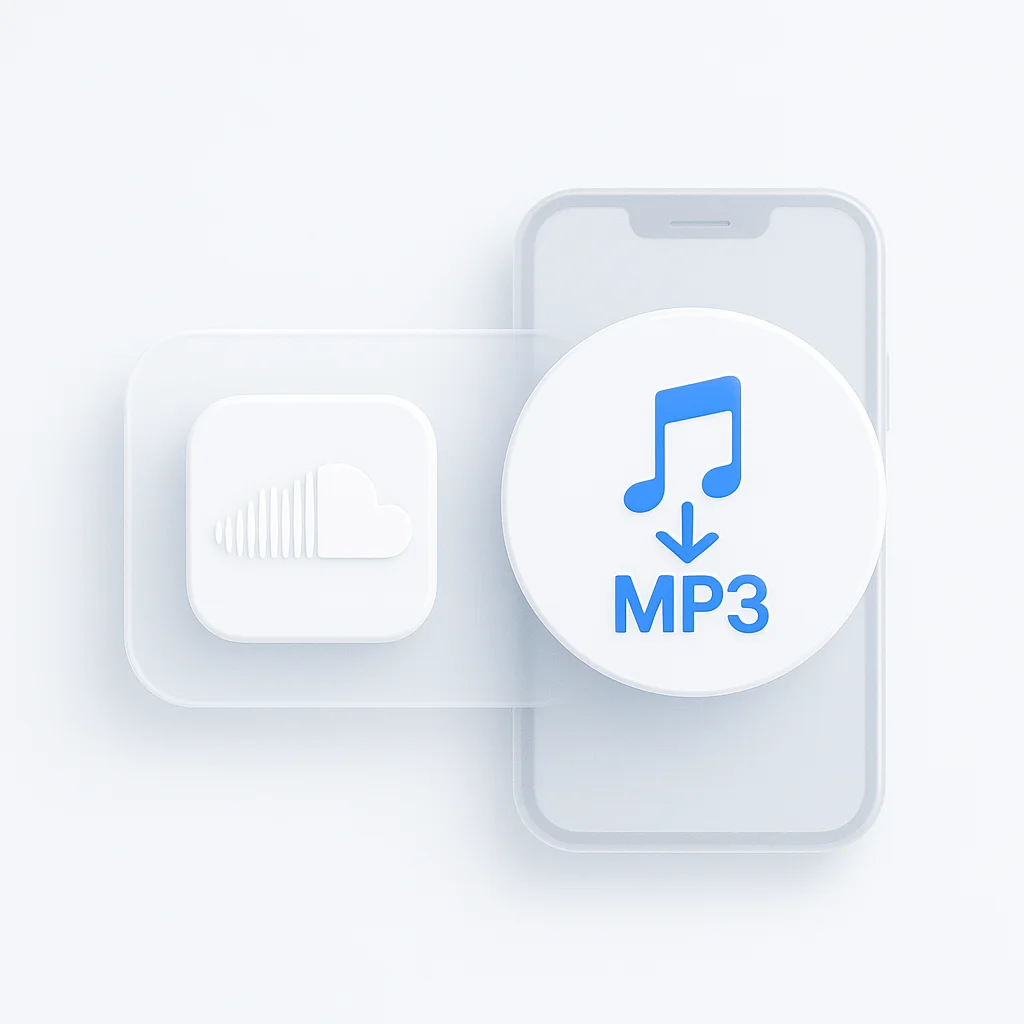Sollten Sie Meetings aufzeichnen, die Sie nicht organisiert haben? Dieser Leitfaden untersucht die ethischen Überlegungen, Best Practices und alternativen Lösungen, um Ihnen bei der Entscheidung zu helfen, wann Sie die Aufnahmetaste drücken sollten und wann Sie sich auf andere Methoden verlassen können.
Einführung
Stellen Sie sich vor: Sie sitzen in einem Meeting, das Sie nicht organisiert haben, und plötzlich fällt ein goldenes Informationsnugget vom Himmel. Es ist die perfekte Lösung für ein Problem, mit dem Sie sich herumschlagen, oder der Schlüssel zur Erschließung einer neuen Chance. Aber was, wenn Sie Ihr treues Notizbuch nicht zur Hand haben? Riskieren Sie, diese wertvolle Erkenntnis für immer zu verlieren, oder brechen Sie die goldene Regel und zücken Ihr Telefon, um das Meeting aufzuzeichnen?
Dies ist das ethische Dilemma, vor dem viele von uns in den heutigen schnelllebigen, kollaborativen Arbeitsplätzen stehen. Das Aufzeichnen von Meetings kann ein wertvolles Werkzeug sein, um wichtige Informationen und Entscheidungen festzuhalten, wirft aber auch Bedenken hinsichtlich Datenschutz, Vertrauen und Transparenz auf.
Vorteile der Aufzeichnung unorganisierter Meetings:
- Verbesserte Informationsspeicherung: Das Gedächtnis kann unzuverlässig sein, insbesondere wenn es um komplexe oder technische Informationen geht. Durch die Aufzeichnung eines Meetings können Sie wichtige Punkte und Details in Ihrem eigenen Tempo noch einmal durchgehen.
- Verbesserte Zusammenarbeit: Das Teilen von Aufzeichnungen mit Kollegen, die nicht an dem Meeting teilnehmen konnten, stellt sicher, dass alle auf dem gleichen Stand sind und effektiv zusammenarbeiten können.
- Genaue Dokumentation: Aufzeichnungen können als wertvoller Bezugspunkt für zukünftige Diskussionen und Entscheidungen dienen und das Risiko von Missverständnissen oder Streitigkeiten verringern.
Nachteile der Aufzeichnung unorganisierter Meetings:
- Datenschutzbedenken: Jemanden ohne dessen Wissen oder Zustimmung aufzuzeichnen, kann ein schwerwiegender Vertrauens- und Datenschutzbruch sein.
- Hemmung der Teilnahme: Teilnehmer fühlen sich möglicherweise weniger wohl, ihre Ideen frei zu äußern, wenn sie wissen, dass sie aufgezeichnet werden.
- Rechtliche Probleme: Abhängig von Ihrem Standort und den Richtlinien Ihrer Organisation kann es rechtliche Beschränkungen für die Aufzeichnung von Meetings ohne Zustimmung geben.
Dieser Blog-Beitrag soll Ihnen helfen, sich in der komplexen Landschaft der Aufzeichnung unorganisierter Meetings zurechtzufinden. Wir werden die ethischen Überlegungen, Best Practices und alternativen Lösungen untersuchen, um Ihnen bei der Entscheidung zu helfen, wann es angebracht ist, die Aufnahmetaste zu drücken, und wann andere Methoden möglicherweise eine bessere Option sind. Wir geben Ihnen auch Anleitungen, wie Sie eine Einwilligung einholen, Ihre Absichten transparent kommunizieren und sicherstellen, dass Aufzeichnungen verantwortungsvoll und ethisch verwendet werden.
Am Ende dieses Beitrags verfügen Sie über das Wissen und die Ressourcen, die Sie benötigen, um fundierte Entscheidungen über die Aufzeichnung unorganisierter Meetings zu treffen und sicherzustellen, dass Sie diese Technologie durchdacht und ethisch einsetzen.
Die Ethik der Aufzeichnung unorganisierter Meetings: Umgang mit Vertrauen, Transparenz und rechtlichen Fragen
Die Aufzeichnung unorganisierter Meetings stellt ein einzigartiges ethisches Dilemma dar. Sie kann zwar wertvolle Vorteile bieten, wie z. B. die Erfassung wichtiger Informationen und die Verbesserung der Zusammenarbeit, wirft aber auch Bedenken hinsichtlich Datenschutz, Vertrauen und rechtlicher Konsequenzen auf. Um diese komplexe Landschaft zu bewältigen, müssen wir uns mit den ethischen Überlegungen befassen, bevor wir die Aufnahmetaste drücken.
Transparenz und Einwilligung: Eckpfeiler ethischer Aufzeichnung
Transparenz und Einwilligung sind das Fundament ethischer Aufzeichnungen. Informieren Sie die Teilnehmer immer über Ihre Absicht, das Meeting aufzuzeichnen, idealerweise bevor es beginnt. Dies ermöglicht es ihnen, fundierte Entscheidungen über ihre Teilnahme zu treffen und schützt ihre Privatsphäre.
Rechtliche Implikationen: Die Grenzen verstehen
Das Aufzeichnen ohne Einwilligung kann rechtliche Konsequenzen haben, die je nach Gerichtsbarkeit und den Richtlinien Ihrer Organisation variieren. Machen Sie sich mit den einschlägigen Gesetzen zur Aufzeichnungseinwilligung vertraut und stellen Sie sicher, dass Ihre Handlungen mit diesen übereinstimmen.
Vertrauen und Beziehungen: Aufbau einer kollaborativen Umgebung
Die Aufzeichnung kann das Vertrauen innerhalb eines Teams untergraben, wenn sie nicht transparent und mit Einwilligung erfolgt. Die Teilnehmer zögern möglicherweise, ihre Ideen frei zu äußern, da sie befürchten, dass sie falsch dargestellt oder gegen sie verwendet werden könnten. Der Aufbau einer Kultur der offenen Kommunikation und die Achtung der Privatsphäre sind entscheidend für die Förderung einer kollaborativen Umgebung.
Ein Rahmen für ethische Entscheidungsfindung:
Um festzustellen, ob die Aufzeichnung eines unorganisierten Meetings ethisch vertretbar ist, sollten Sie den folgenden Rahmen berücksichtigen:
1. Notwendigkeit:
- Ist die Aufzeichnung die einzige Möglichkeit, wichtige Informationen effektiv zu erfassen?
- Gibt es alternative Methoden, wie z. B. detaillierte Notizen oder ein benannter Protokollführer, die ausreichen könnten?
2. Transparenz und Einwilligung:
- Sind sich alle Teilnehmer der Absicht zur Aufzeichnung bewusst?
- Haben Sie von allen Beteiligten eine ausdrückliche Einwilligung eingeholt?
- Gibt es ein klares Verständnis darüber, wie die Aufzeichnung verwendet und gespeichert wird?
3. Zweck und Verwendung:
- Dient die Aufzeichnung legitimen Zwecken, wie z. B. der Erfassung von Kernpunkten und Entscheidungen?
- Wird sie verantwortungsvoll und ethisch verwendet und die Privatsphäre der Teilnehmer respektiert?
- Wird die Aufzeichnung nur mit autorisierten Personen geteilt?
4. Einhaltung der Gesetze:
- Halten Sie alle relevanten Gesetze und Organisationsrichtlinien zur Aufzeichnungseinwilligung ein?
- Gibt es Einschränkungen oder Beschränkungen bezüglich der Aufzeichnung an Ihrem Arbeitsplatz?
Indem Sie diese Faktoren sorgfältig berücksichtigen, können Sie fundierte Entscheidungen über die Aufzeichnung unorganisierter Meetings treffen. Denken Sie daran, dass es bei der ethischen Aufzeichnung darum geht, ein Gleichgewicht zwischen der Erfassung wertvoller Informationen und der Achtung der Privatsphäre und des Vertrauens Ihrer Kollegen zu finden.
Best Practices für die Aufzeichnung unorganisierter Meetings: Umgang mit Ethik und Effizienz
Die Aufzeichnung unorganisierter Meetings kann ein wertvolles Werkzeug sein, um wichtige Informationen zu erfassen, aber es ist entscheidend, dies ethisch und effizient zu tun. Hier ist ein Rahmen für Best Practices vor, während und nach der Aufzeichnung:
Vor der Aufnahme:
1. Informieren und Einwilligung einholen:
- Informieren Sie alle Teilnehmer vor dem Meeting klar über Ihre Absicht, das Meeting aufzuzeichnen.
- Erklären Sie den Zweck der Aufzeichnung und wie sie verwendet wird.
- Holen Sie von jedem Teilnehmer eine ausdrückliche Einwilligung ein, entweder mündlich oder schriftlich.
2. Aufzeichnungsrichtlinien kommunizieren:
- Teilen Sie den Teilnehmern mit, wie lange die Aufzeichnung dauern wird und welche Themen besprochen werden.
- Bieten Sie einen Mechanismus zum Abmelden an, z. B. das Verlassen des Meetings oder nicht aufgezeichnet zu werden.
- Betonen Sie, dass die Aufzeichnung verantwortungsvoll und ethisch verwendet wird.
3. Bereiten Sie Ihre Ausrüstung vor:
- Stellen Sie sicher, dass Ihr Aufnahmegerät aufgeladen ist und ausreichend Speicherplatz hat.
- Wählen Sie einen ruhigen Ort mit minimalen Hintergrundgeräuschen.
- Testen Sie Ihr Aufnahmegerät vorab, um eine optimale Qualität sicherzustellen.
Während der Aufnahme:
1. Identifizieren Sie sich klar:
- Stellen Sie sich kurz vor und geben Sie das Datum und den Zweck des Meetings an.
- Geben Sie an, wer teilnimmt und welche Rolle diese Personen haben.
- Wiederholen Sie den Aufzeichnungsprozess und die eingeholte Einwilligung.
2. Nehmen Sie Audio klar auf:
- Platzieren Sie das Aufnahmegerät an einem zentralen Ort, um alle Stimmen klar zu erfassen.
- Überwachen Sie die Audioqualität während des gesamten Meetings und passen Sie die Einstellungen bei Bedarf an.
- Minimieren Sie Hintergrundgeräusche, indem Sie Fenster schließen oder Geräte stummschalten.
3. Machen Sie sich Notizen:
- Ergänzen Sie die Aufzeichnung mit detaillierten Notizen für zusätzlichen Kontext und Referenz.
- Erfassen Sie wichtige Punkte, Entscheidungen und Aktionspunkte.
- Notieren Sie alle relevanten Details, wie z. B. Zeitstempel oder Sprecheridentifikationen.
Nach der Aufnahme:
1. Beschriften und speichern Sie Aufzeichnungen sicher:
- Beschriften Sie Aufzeichnungen eindeutig mit Datum, Thema und Teilnehmern.
- Speichern Sie Aufzeichnungen sicher auf einer passwortgeschützten Plattform.
- Beschränken Sie den Zugriff nur auf autorisierte Personen.
2. Transkribieren oder zusammenfassen:
- Erwägen Sie, die Aufzeichnung zu transkribieren oder eine detaillierte Zusammenfassung zu erstellen.
- Dadurch werden wichtige Informationen leicht durchsuchbar und zugänglich.
- Teilen Sie Zusammenfassungen mit den Teilnehmern zur Bezugnahme und Nachverfolgung.
3. Löschen Sie Aufzeichnungen verantwortungsvoll:
- Legen Sie einen Aufbewahrungszeitraum für die Aufzeichnungen fest.
- Kommunizieren Sie diese Richtlinie klar an alle Teilnehmer.
- Löschen Sie Aufzeichnungen nach Ablauf der Aufbewahrungsfrist sicher und dauerhaft.
Zusätzliche Tipps für ethische Aufzeichnungen:
- Vermeiden Sie die Aufzeichnung sensibler oder vertraulicher Informationen ohne ausdrückliche Einwilligung.
- Informieren Sie die Teilnehmer, wenn die Aufzeichnung mit Personen außerhalb des Meetings geteilt wird.
- Holen Sie eine zusätzliche Einwilligung ein, wenn die Aufzeichnung für Zwecke verwendet wird, die über die ursprüngliche Erklärung hinausgehen.
- Achten Sie auf die nonverbalen Signale der Teilnehmer und respektieren Sie deren Privatsphäre.
Indem Sie diese Best Practices befolgen, können Sie sicherstellen, dass die Aufzeichnung unorganisierter Meetings ethisch, effizient und transparent erfolgt. Denken Sie daran, dass das Ziel darin besteht, wertvolle Informationen zu erfassen und gleichzeitig eine kollaborative und vertrauensvolle Umgebung zu fördern.
Alternativen zur Aufzeichnung unorganisierter Meetings: Informationen effizient und ethisch erfassen
Die Aufzeichnung unorganisierter Meetings kann zwar von Vorteil sein, ist aber nicht die einzige Möglichkeit, wertvolle Informationen zu erfassen. Hier sind einige alternative Methoden, jede mit ihren eigenen Vor- und Nachteilen:
1. Detaillierte Notizen machen:
Vorteile:
- Entwickelt aktive Zuhör- und Verständnisfähigkeiten.
- Bietet eine gezielte Aufzeichnung von Schlüsselpunkten und Entscheidungen.
- Fördert die persönliche Interpretation und Analyse von Informationen.
Nachteile:
- Erfordert ausgeprägte Fähigkeiten zum Notizen machen und Konzentration.
- Kann wichtige Details oder Nuancen der Diskussion verpassen.
- Zeitaufwändig, insbesondere bei längeren Meetings.
2. Verwendung von Kollaborationstools für das Notizen machen:
Vorteile:
- Fördert die Echtzeit-Zusammenarbeit bei der Erfassung von Informationen.
- Ermöglicht gleichzeitiges Notizen machen von mehreren Teilnehmern.
- Bietet Funktionen wie Suche, Tagging und Organisation für einfache Referenz.
Nachteile:
- Erfordert Zugriff auf Technologie und kompatible Geräte.
- Kann zu Informationsüberlastung und Ablenkungen führen.
- Erfordert Vertrauen und Übereinstimmung in Bezug auf Notizen machende Rollen und Verfahren.
3. Zusammenfassung der wichtigsten Punkte und Aktionspunkte nach dem Meeting:
Vorteile:
- Bietet einen prägnanten Überblick über wichtige Erkenntnisse und Entscheidungen.
- Ermöglicht Reflexion und Verfeinerung von Informationen.
- Fördert individuelle Beiträge und Perspektiven.
Nachteile:
- Kann wichtige Details oder Nuancen der Diskussion verpassen.
- Verlässt sich auf das individuelle Gedächtnis und die Interpretation.
- Erfordert Zeit und Mühe, um eine umfassende Zusammenfassung zu erstellen.
4. Benannter Protokollführer:
Vorteile:
- Stellt sicher, dass detaillierte und genaue Notizen gemacht werden.
- Befreit andere Teilnehmer, sich auf die Diskussion zu konzentrieren und aktiv beizutragen.
- Bietet einen zentralen Bezugspunkt für alle Beteiligten.
Nachteile:
- Erfordert zusätzliche Ressourcen und Koordination, um einen Protokollführer zu benennen.
- Kann je nach Perspektive des Protokollführers zu Informationsverzerrungen führen.
- Ist möglicherweise nicht für alle Meetinggrößen und -dynamiken geeignet.
Die richtige Alternative wählen:
Die am besten geeignete Alternative hängt vom spezifischen Kontext des Meetings, der Art der diskutierten Informationen und den verfügbaren Ressourcen ab. Berücksichtigen Sie die folgenden Faktoren:
- Meetinglänge und -komplexität: Längere oder komplexere Meetings können von Kollaborationstools oder benannten Protokollführern profitieren.
- Wichtigkeit der Erfassung jedes Details: Wenn Details entscheidend sind, können detaillierte Notizen oder Aufzeichnungen erforderlich sein.
- Verfügbarkeit von Ressourcen: Berücksichtigen Sie die Technologie und das Personal, das für Kollaborationstools oder benannte Protokollführer zur Verfügung steht.
- Teilnehmerpräferenzen: Einige Personen ziehen es möglicherweise vor, wichtige Punkte zusammenzufassen, während andere von detaillierten Aufzeichnungen profitieren.
Alternativen kombinieren:
Für optimale Ergebnisse sollten Sie verschiedene Alternativen kombinieren. Beispielsweise könnten Sie Kollaborationstools für das Notizen machen in Echtzeit verwenden und später eine detailliertere Zusammenfassung erstellen. Dieser Ansatz kann umfassende Informationen erfassen und gleichzeitig individuelle Präferenzen berücksichtigen.
Indem Sie geeignete Alternativen zur Aufzeichnung unorganisierter Meetings erkunden und implementieren, können Sie eine effektive Informationserfassung gewährleisten, die kollaborative Teilnahme fördern und eine transparentere und ethischere Umgebung schaffen.
Fazit
In der heutigen schnelllebigen und kollaborativen Arbeitsumgebung kann die Aufzeichnung unorganisierter Meetings ein wertvolles Werkzeug sein, um Informationen zu erfassen, die Zusammenarbeit zu fördern und sicherzustellen, dass alle auf dem gleichen Stand sind. Ethische Überlegungen und Best Practices sind jedoch entscheidend, um Transparenz zu gewährleisten, die Privatsphäre der Teilnehmer zu respektieren und rechtliche Konsequenzen zu vermeiden.
Wichtige Erkenntnisse:
- Die Aufzeichnung unorganisierter Meetings kann ein wertvolles Werkzeug sein, um wichtige Informationen zu erfassen, muss jedoch ethisch und transparent erfolgen.
- Transparenz und Einwilligung sind von größter Bedeutung. Informieren Sie die Teilnehmer und holen Sie vor der Aufzeichnung deren ausdrückliche Zustimmung ein.
- Kommunizieren Sie klar den Zweck der Aufzeichnung und wie sie verwendet wird.
- Respektieren Sie die Privatsphäre und vermeiden Sie die Aufzeichnung sensibler oder vertraulicher Informationen ohne Einwilligung.
- Implementieren Sie Best Practices für die Aufzeichnung, einschließlich der Information der Teilnehmer, der Einholung der Einwilligung, der Vorbereitung der Ausrüstung und der sicheren Speicherung von Aufzeichnungen.
- Erwägen Sie alternative Methoden wie detaillierte Notizen, Kollaborationstools und Zusammenfassung wichtiger Punkte.
- Wählen Sie den Ansatz, der am besten zum spezifischen Kontext und den Bedürfnissen des Meetings passt.
Reflektieren Sie Ihre Werte und Richtlinien:
Nehmen Sie sich einen Moment Zeit, um über Ihre eigenen Werte und Organisationsrichtlinien bezüglich der Aufzeichnung von Meetings nachzudenken.
- Fragen Sie sich:
- Wann ist es angebracht, ein unorganisiertes Meeting aufzuzeichnen?
- Wie holen Sie die informierte Einwilligung der Teilnehmer ein?
- Welche Verfahren haben Sie zum Speichern und Zugreifen auf Aufzeichnungen?
- Wie stellen Sie sicher, dass Aufzeichnungen verantwortungsvoll und ethisch verwendet werden?
Ressourcen für weitere Informationen:
- International Association of Privacy Professionals (IAPP): https://iapp.org/
- Electronic Frontier Foundation (EFF): https://www.eff.org/
- American Bar Association (ABA) Center for Professional Responsibility: https://www.americanbar.org/groups/professional_responsibility/
Wir ermutigen Sie, diese Ressourcen weiter zu erkunden und über Ihre eigenen Organisationsrichtlinien und Werte nachzudenken. Indem Sie einen durchdachten und ethischen Ansatz zur Aufzeichnung unorganisierter Meetings verfolgen, können Sie die Kommunikation, die Zusammenarbeit und eine fundierte Entscheidungsfindung innerhalb Ihres Teams fördern.






